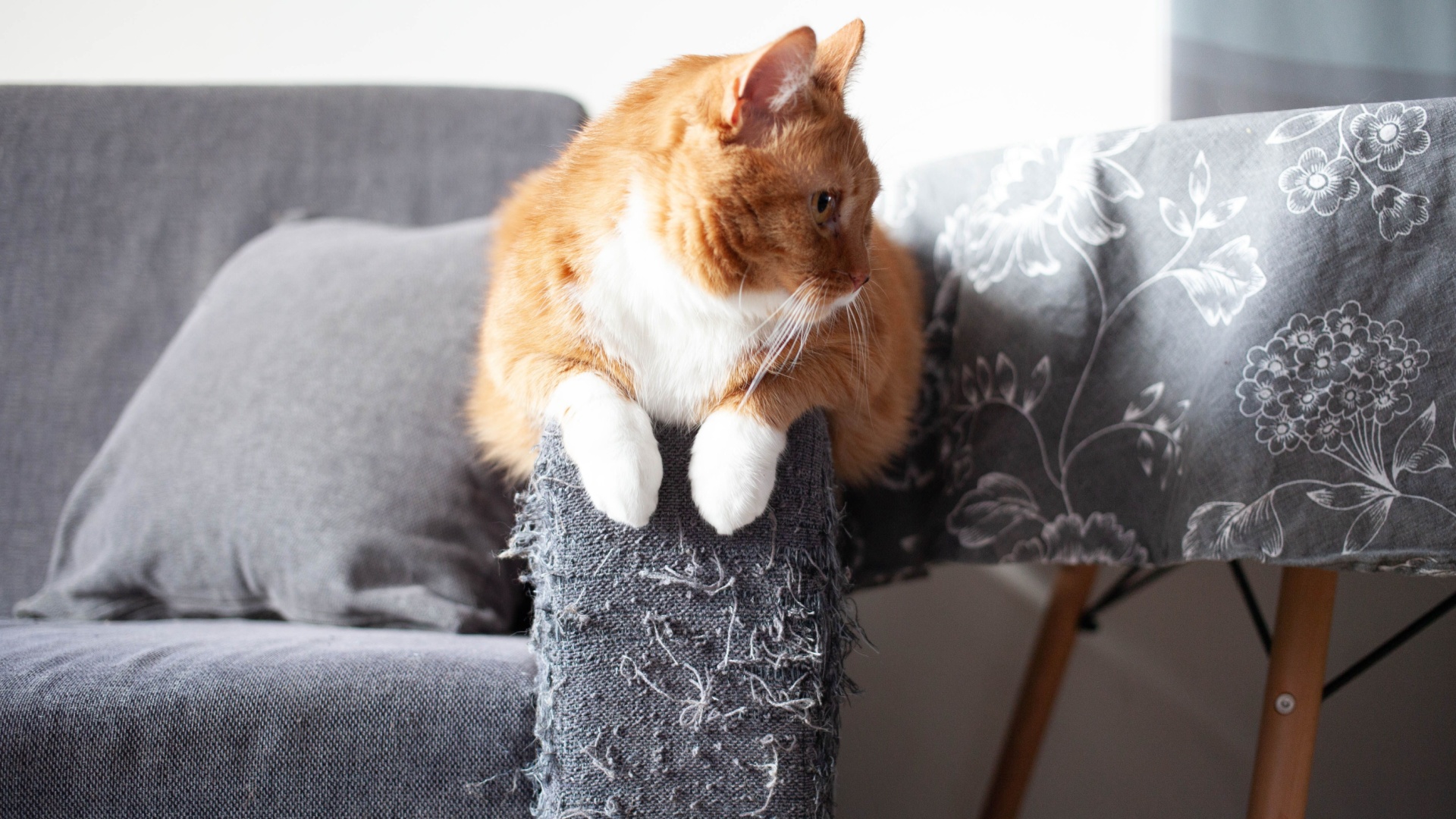Cats can bring immense joy to a household, but their natural instincts can sometimes lead to chaos. From scratching furniture to knocking over fragile items, our feline friends have a knack for testing our patience.
Fortunately, there are strategies you can employ to mitigate the destruction. Let’s check out these creative solutions to help you maintain a harmonious home where both you and your cat can coexist peacefully.
1. Provide Plenty Of Scratching Posts
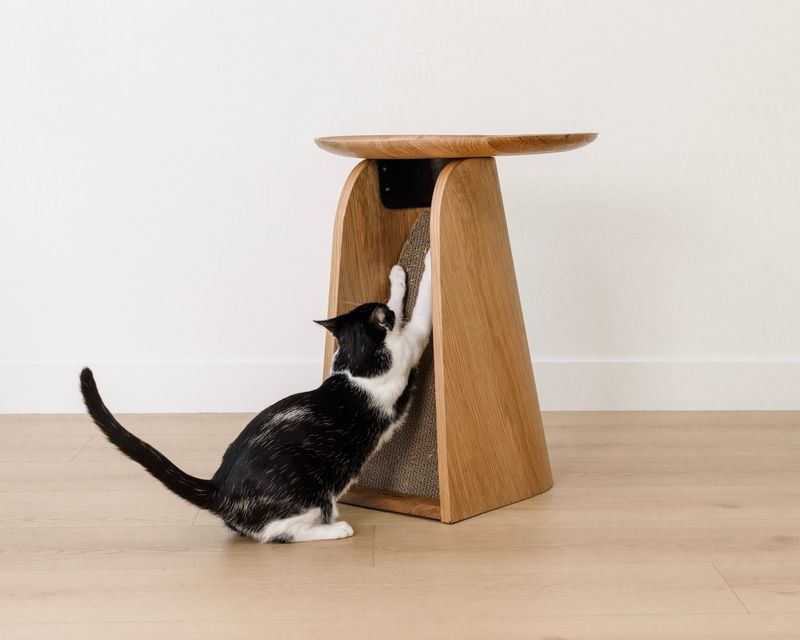
Cats have an innate need to scratch, so giving them ample opportunities to do so is essential. Strategically place scratching posts throughout your home, especially in areas where your cat likes to scratch. This not only saves your furniture but also keeps your feline friend happy. Consider the material and texture of the scratching posts.
Some cats prefer sisal, while others might like cardboard or carpet. You may need to experiment with different types to see what your cat prefers. Position the posts near items your cat typically targets to divert their attention. Incorporate a mix of vertical and horizontal scratching options to cater to your cat’s preferences.
By offering variety, you can help them stay interested in their designated scratching areas. Engage your cat with the posts by using toys or catnip to make them more enticing.
2. Use Double-Sided Tape
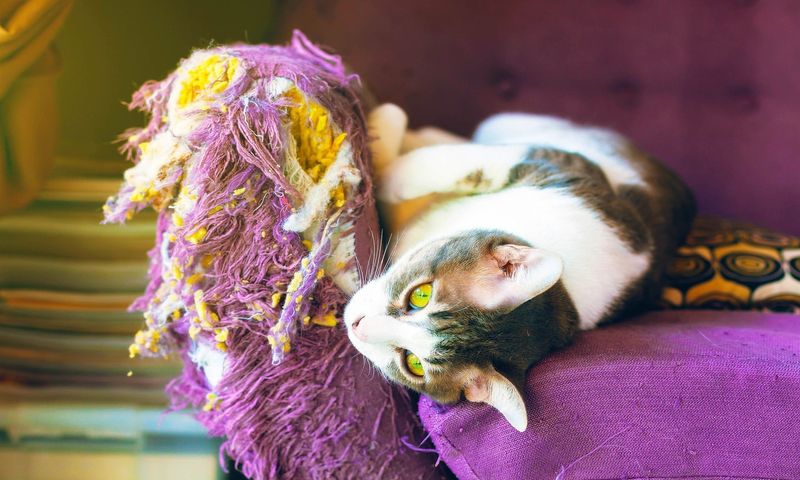
To deter cats from scratching furniture, consider applying double-sided tape to areas they frequent. The sticky sensation on their paws is unpleasant for cats, discouraging them from continuing their behavior. This is a temporary solution that can train your cat to avoid certain spots.
Place the tape on areas like couch arms or table legs where your cat tends to scratch. As they learn to associate these spots with the unpleasant sensation, they are likely to steer clear.
This simple trick can protect your furniture while teaching your cat boundaries. Remember to remove the tape once your cat has learned to avoid the area, as leaving it on for too long might damage your furniture. Gradually introducing alternative scratching surfaces nearby can further reinforce good behavior.
3. Provide Interactive Toys
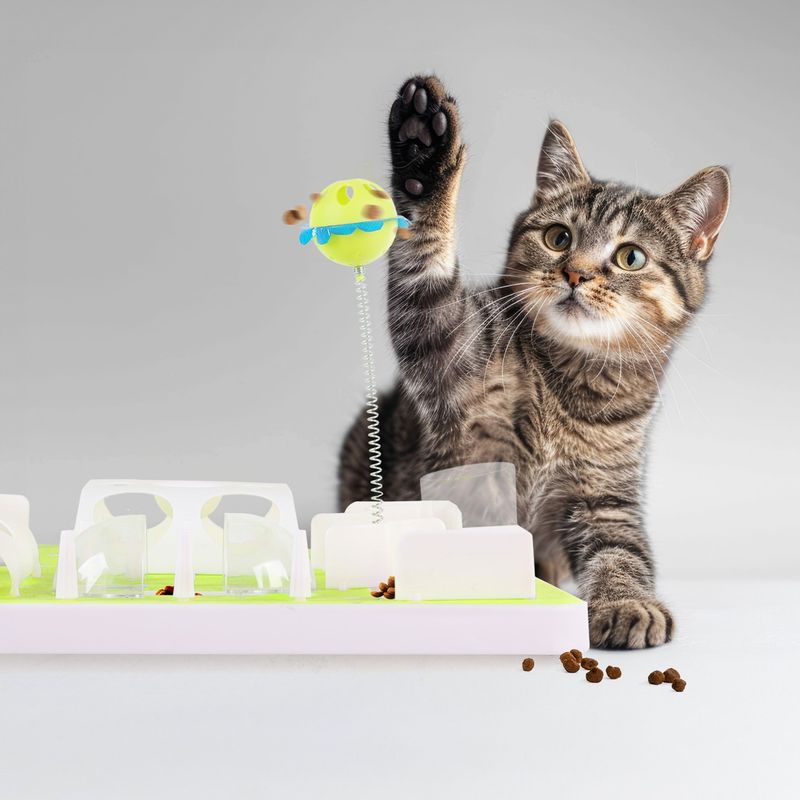
Keeping your cat entertained with interactive toys can significantly reduce their destructive behavior. Toys that mimic prey or challenge your cat mentally can keep them occupied for hours, reducing boredom-induced mischief. Invest in toys like feather wands, laser pointers, or puzzle feeders.
These can provide both physical and mental stimulation, satisfying your cat’s hunting instincts. Rotate the toys regularly to keep your cat interested and engaged. Engage in regular play sessions with your cat to strengthen your bond and tire them out.
An exhausted cat is less likely to wreak havoc in your home. Encouraging play also reinforces positive behaviors and provides an outlet for pent-up energy.
4. Create A Cat-Friendly Zone
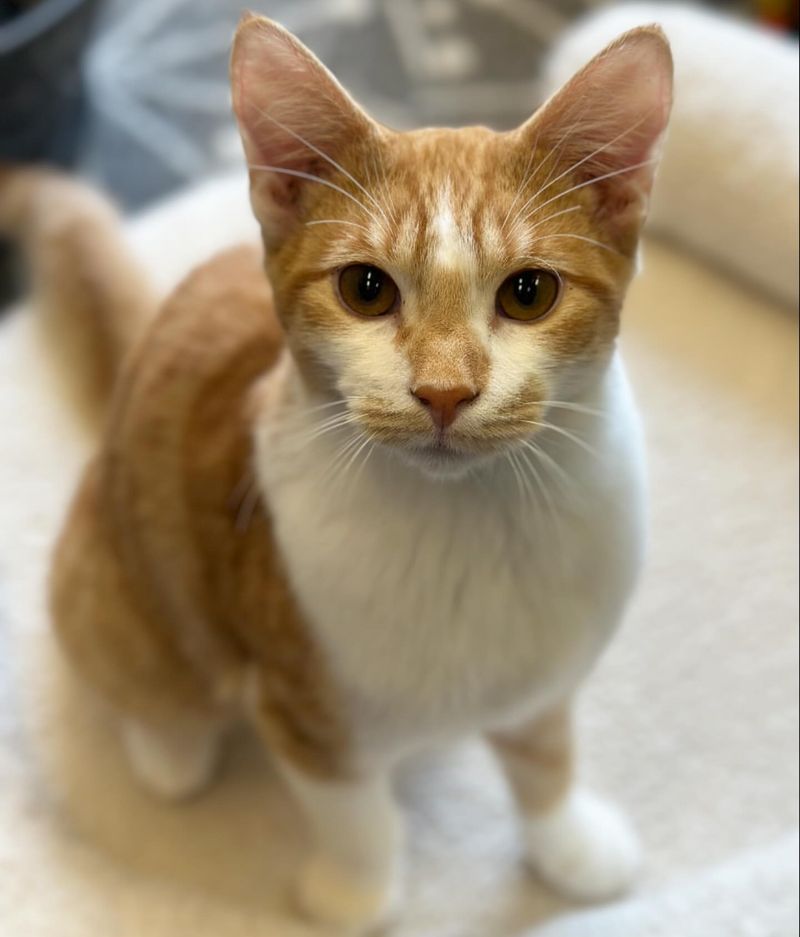
Designating a specific area in your home as a cat-friendly zone can help minimize damage elsewhere. Furnish this space with a comfortable bed, toys, scratching posts, and even a cat tree. This creates a safe haven where your cat can relax and play.
Position the zone in a quiet part of your home to give your cat a peaceful retreat. By concentrating their activities in one area, you can reduce the chances of them damaging other parts of your home. Make the zone appealing by including items your cat loves.
Regularly refresh the area with new toys or a sprinkle of catnip to maintain interest. Encouraging your cat to spend time in their designated space can lead to a more harmonious household and prevent unwanted destruction.
5. Use Cat-Repellent Sprays

Cat-repellent sprays can be a practical solution to keep your feline friend away from certain areas. These sprays are designed to be safe for both your pet and furniture, providing a gentle deterrent without causing harm.
Spray the repellent on areas where your cat tends to scratch or jump, such as couches or countertops. The scent, often unpleasant to cats, can discourage them from returning to these spots. This can be particularly useful for outdoor cats that wander indoors. Ensure the spray is non-toxic and specifically designed for use around pets.
Regular application may be necessary until your cat learns to avoid these areas. Combining this method with positive reinforcement can reinforce good behavior.
6. Trim Your Cat’s Claws
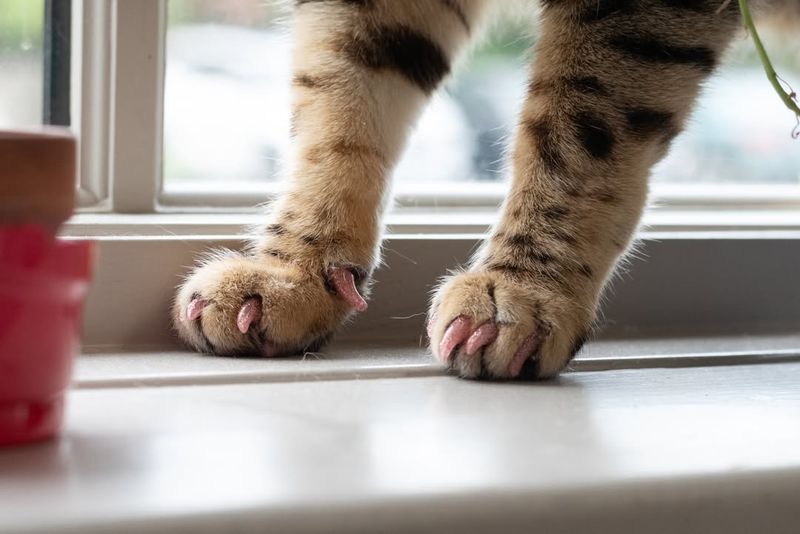
Regularly trimming your cat’s claws can reduce their ability to cause damage. Shorter claws are less likely to snag on fabrics or scratch surfaces, helping to protect your home. Use a specially designed cat claw trimmer and approach the task calmly.
If your cat is not used to having their claws trimmed, start slowly and reward them with treats after each session. This can help them associate claw trimming with positive experiences. Consult your veterinarian if you’re unsure about trimming your cat’s claws.
They can provide guidance on the correct technique and frequency, ensuring your cat remains comfortable and stress-free during the process.
7. Train With Positive Reinforcement

Positive reinforcement training can effectively guide your cat’s behavior. Rewarding your cat with treats, praise, or playtime when they use appropriate scratching surfaces can encourage good habits. Start by observing your cat’s natural behavior and preferences.
When they use the correct items, immediately offer a reward. Consistency is key to reinforcing these behaviors over time.
Avoid punishing your cat for unwanted behavior, as this can lead to fear and anxiety. Instead, focus on celebrating their successes and providing an encouraging environment that fosters learning and adaptation.
8. Provide Safe Climbing Opportunities
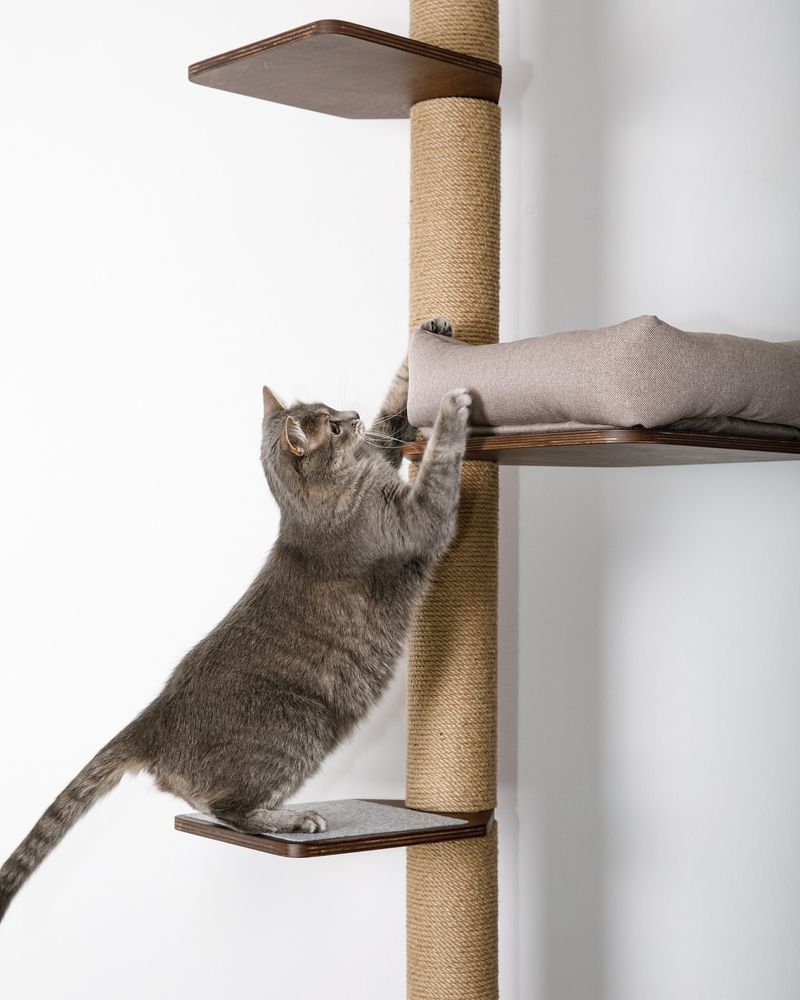
Cats love to climb, and providing them with safe opportunities to do so can prevent them from seeking out less suitable locations.
Cat trees, shelves, and climbing walls can satisfy their natural instincts. Install climbing structures in areas where your cat loves to play. This can reduce their desire to jump onto fragile furniture or knock over items.
Make sure these structures are stable and secure to prevent accidents. Creating vertical spaces for your cat can also enrich their environment, providing mental and physical stimulation.
A happy, engaged cat is less likely to engage in destructive behavior, making your home a more peaceful place.
9. Use Furniture Protectors
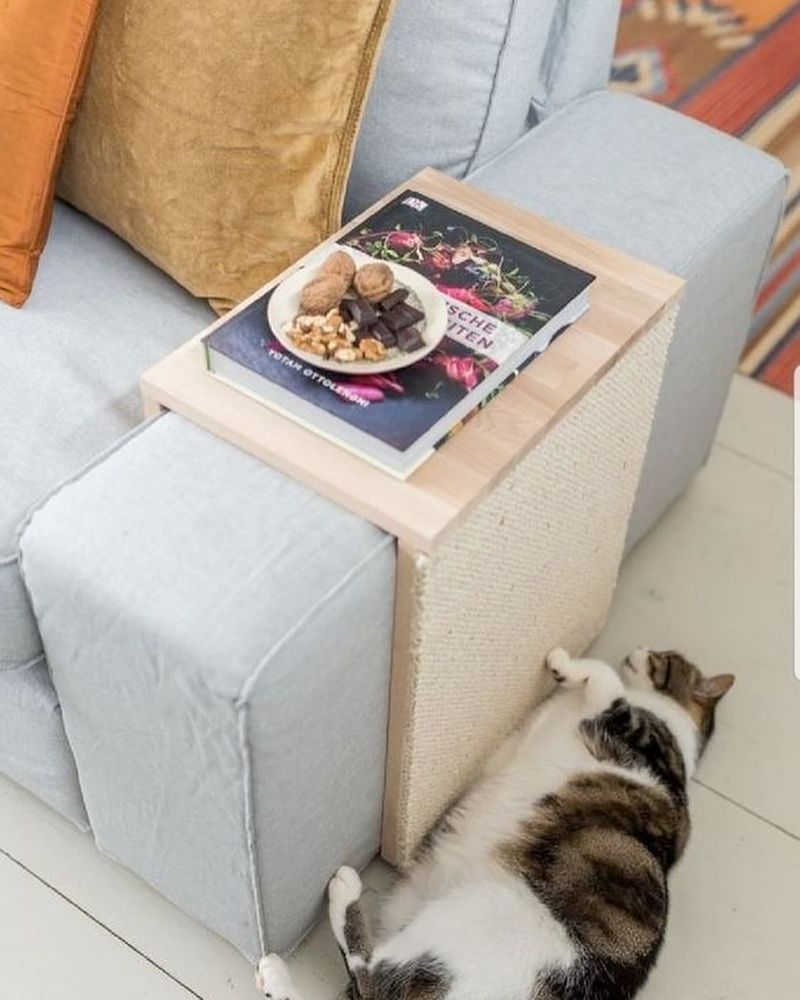
Furniture protectors can be a practical way to shield your belongings from a cat’s claws. These can be applied to couches, chairs, and other vulnerable items, offering a physical barrier against scratching.
Look for protectors that are easy to apply and remove, ensuring they do not damage your furniture. Transparent options can blend seamlessly with your decor while offering protection. While furniture protectors are not a permanent solution, they can serve as a helpful tool while you work on changing your cat’s behavior.
Pairing them with other strategies, like offering more scratching posts, can enhance their effectiveness.
10. Introduce New Scents

Introducing new scents into your home can influence your cat’s behavior. Certain aromas like lavender or chamomile can have a calming effect, reducing stress-related behaviors such as scratching or marking. Use diffusers or sprays to spread these scents throughout your home.
Be sure to choose cat-safe options and avoid any oils that may be harmful to pets. The calming atmosphere can make your cat feel more secure, leading to fewer destructive actions. Changing the scent profile of an area can also deter cats from unwanted behaviors.
If your cat associates a certain smell with a negative experience, they may avoid that area, helping to protect your home.
11. Offer Alternative Entertainment
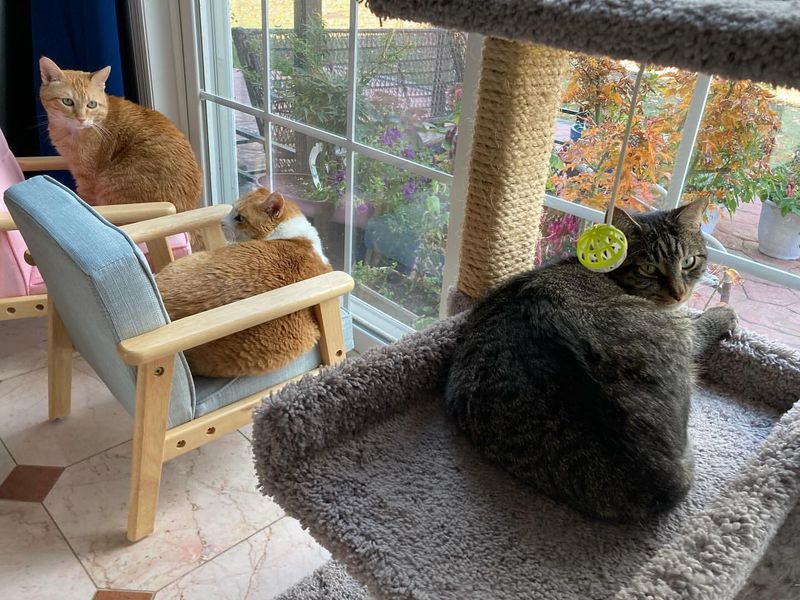
Cats are naturally curious creatures, and providing them with alternative entertainment can keep them occupied. Window perches with a view of the outside world can offer hours of amusement.
Set up perches in spots where your cat can watch birds or squirrels. This can satisfy their natural curiosity and hunting instincts without causing damage inside your home. Consider adding bird feeders outside to attract more wildlife for your cat to observe.
By engaging your cat’s attention with the world beyond, you can reduce their interest in destructive indoor behaviors. This simple change can enhance their quality of life and maintain your home’s condition.
12. Provide A Stimulating Environment
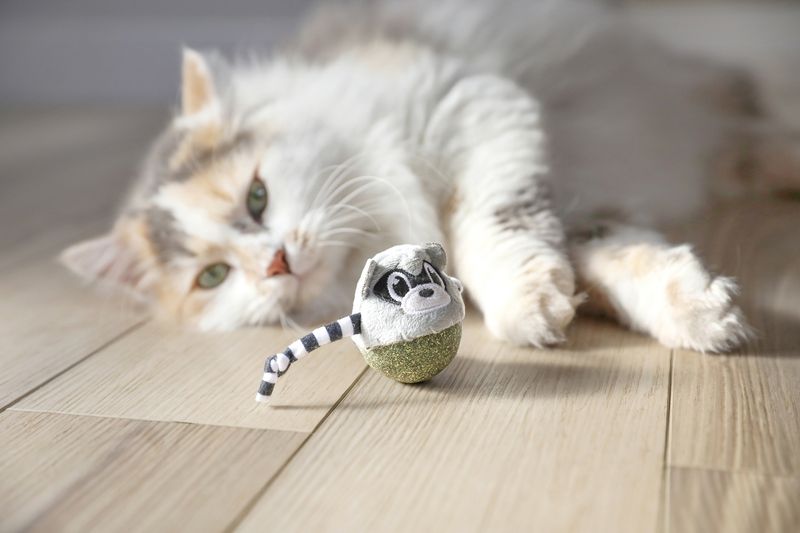
A stimulating environment can keep your cat occupied and reduce destructive behavior. Incorporating tunnels, interactive feeders, and a variety of toys can offer your cat mental and physical challenges. Set up play areas with different activities to cater to your cat’s interests.
Rotating toys and introducing new elements can keep the environment fresh and engaging. A well-stimulated cat is less likely to resort to scratching furniture or causing chaos. Encouraging play and exploration can also strengthen the bond between you and your cat.
By providing an enriching atmosphere, you promote a happy and healthy lifestyle for your feline friend.
13. Ensure Adequate Exercise

Regular exercise can help your cat expend energy that might otherwise be directed towards destructive behaviors. Engaging in physical activities can reduce stress and keep your cat content. Consider taking your cat for walks using a harness and leash.
This can offer them a safe way to explore the outdoors while you maintain control. Play sessions indoors with feather toys or laser pointers can also provide good exercise. Ensuring your cat gets enough physical activity each day can improve their mood and reduce their inclination to scratch or destroy household items.
A tired cat is a content cat, benefiting both your home and your pet.
14. Regularly Refresh Cat Toys
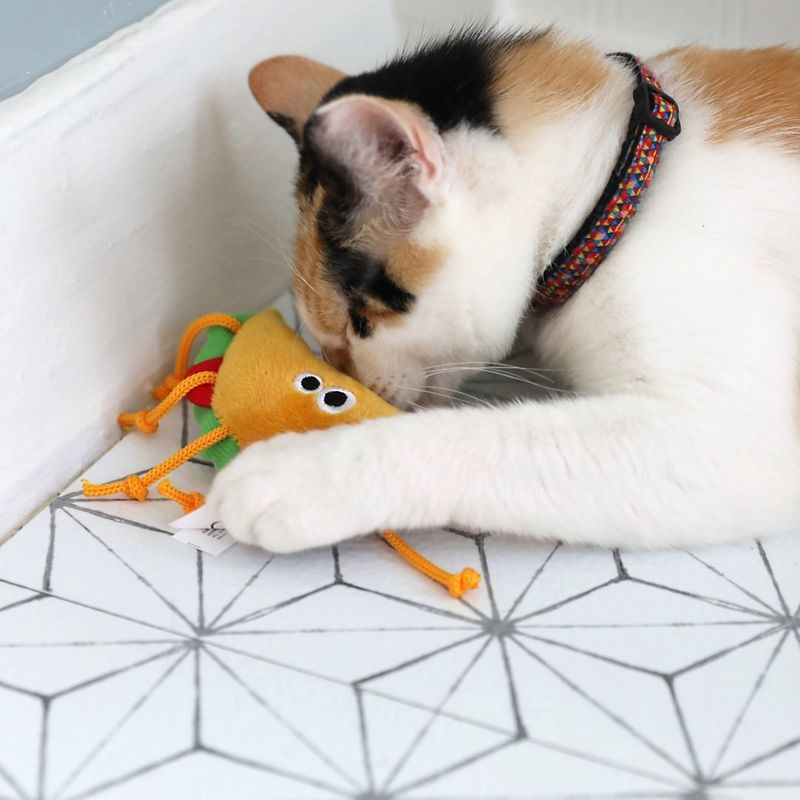
Cats can quickly lose interest in their toys, leading to boredom and destructive behaviors. Regularly refreshing their toy collection can keep them engaged and entertained. Swap out old toys for new ones or introduce different types of toys to spark interest.
Consider toys that make sounds or have different textures to cater to your cat’s preferences. Keeping their playtime exciting can reduce their focus on unwanted behaviors. A diverse selection of toys can stimulate your cat’s natural instincts, providing both mental and physical exercise.
This can prevent them from seeking entertainment by scratching furniture or causing other damage around your home.
15. Consult A Veterinarian Or Cat Behaviorist

If your cat’s destructive behavior persists despite your best efforts, consulting a veterinarian or cat behaviorist can provide valuable insights. These professionals can identify underlying issues and suggest tailored solutions.
Behavioral problems might stem from health issues or stress, and a vet can rule out medical causes. A behaviorist can offer strategies tailored to your cat’s unique personality and environment, ensuring a more effective approach.
Working with a professional can also provide peace of mind, knowing you have expert support to help address your cat’s needs. This collaboration can lead to a happier home for both you and your feline companion.

